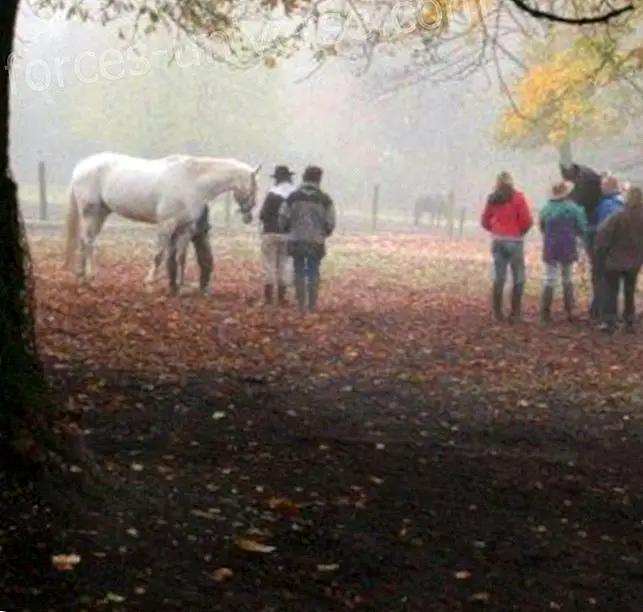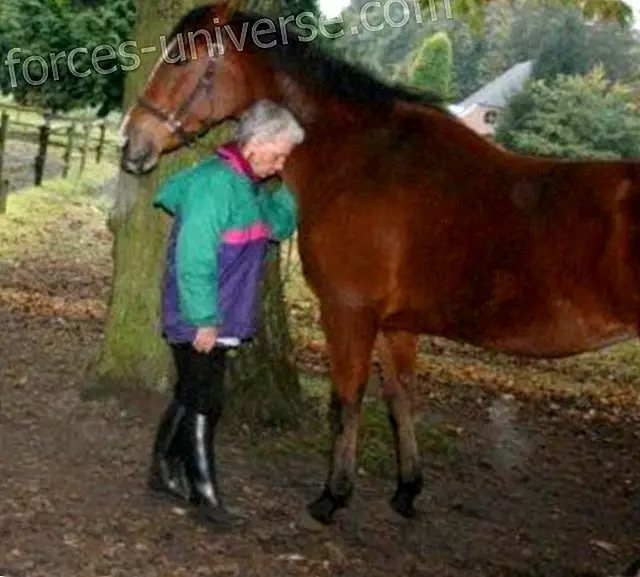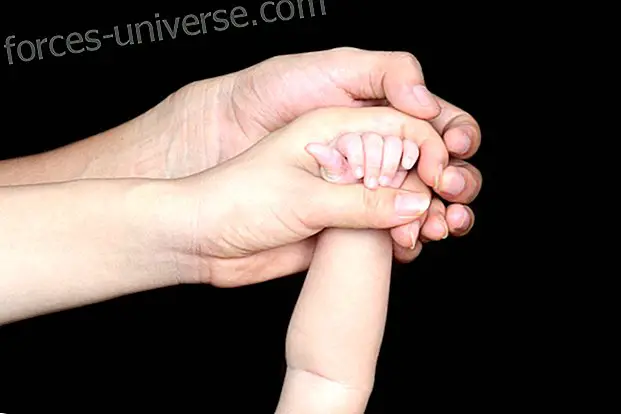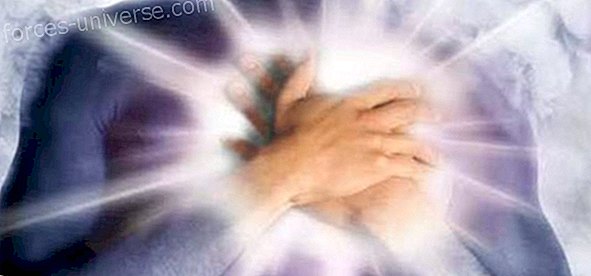“ Our attitude towards the horse is the reflection of our attitude towards ourselves and others”
 Paradise is the Earth, where men and animals live in harmony and recover their ability to communicate with each other .
Paradise is the Earth, where men and animals live in harmony and recover their ability to communicate with each other .
The civilization that is said to be rational and Cartesian, the taste for possession and education that we have received has cut us off from our roots, from our connection to Mother Earth, which is why we are no longer aligned and therefore sometimes We develop unbalanced behaviors.
 At the beginning of the universe, on earth, the entire universe and the creation were ONE, there was an intimate connection between living beings and the different elements. Our perceptions, instinct and intuition, were tuned in order to be able to communicate easily between all species.
At the beginning of the universe, on earth, the entire universe and the creation were ONE, there was an intimate connection between living beings and the different elements. Our perceptions, instinct and intuition, were tuned in order to be able to communicate easily between all species.
Throughout the courses that I propose, we will rethink ties, recreate the connection, resume dialogue and learn to live in harmony with the horses (and with ourselves).
To tame, or rather, to become familiar with the horse and thus become more docile or affirm our behavior and our attitudes towards him while refusing to use violence ... against him, against ourselves or against others.
We will also recover our gifts and our talents, instinct and intuition, all our "animal" part not "civilized".
Yes! We can CHANGE by taking the language of the horse, its philosophy of life and changing our attitudes and reactions.
Responsibility:
In "Principle", we human beings, we are the most evolved beings, therefore, it is up to us to learn the language of the animal and learn to communicate and dialogue with him.
 We must get into their "helmets" and behind their eyes in order to learn their language and perceive their sensitivity .
We must get into their "helmets" and behind their eyes in order to learn their language and perceive their sensitivity .
Learn, know and respect his psychology, his ways of expressing himself, his customs or his forms of relationship and in this way to develop new forms of communication with him.
Precisely by wanting to communicate with the horse, we will begin to develop our body and non-verbal language, calmly, clearly and coherently, sweetly or concisely, depending on the response or collaboration we wish to obtain from it.
Respect the horse, its needs, its limits and also teach the horse to respect our space, without fear, without violence.
Intuitively and instinctively, the horse is so empathetic that it recognizes what is happening to us, he has no need to follow the course or training. Usually, the lack of basic knowledge, on the part of the human being with regard to the horse, and fear are the origin of instinctive defense reactions on the part of the animal. When we reach a point of mutual non-understanding, human fears and frustrations engender violence .
This is also generated by the internal violence of certain human beings and their need for control, their lack of patience or their lack of expertise. The violent reactions in the animal are also due to their fears, their traumas and their frustrations: crisis, blows, attacks, bites, escapes ...
 Our goal as humans is to create solutions if the horse does not do what we ask. Analyze our behavior and yours, analyze our attitudes to adapt or modify them.
Our goal as humans is to create solutions if the horse does not do what we ask. Analyze our behavior and yours, analyze our attitudes to adapt or modify them.
Very often, we are responsible for the lack of collaboration of the horse, therefore we must favor patience, sweetness, firmness, rehearsal, desensitization and tricks.
DOMESTICATE or tame ?
As in the Little Prince of Saint Exupery, one must work every day to create bonds of affection, love, knowledge, mutual trust and security. To tame is to create an emotional, safety and dependency relationship with the horse, and it is better that it be positive. We are responsible for the horse we have tamed or adopted, as in the Little Prince of his Rose ...
Develop and strengthen the ties between the human being and the horse.
In our society, the Man-Horse relationship has changed and we use it less for pure and hard work, we create a relationship where we share moments of pleasure with each other and the feeling we develop is unconditional love for a different being.
 To love is…
To love is…
Empathy, knowledge, compassion and understanding for the psychology of the horse. Our goal is to know what they think and why they act or react in one way or another and ALWAYS choose the peaceful and often fun solution
Patience
Valuation system and rewards, according to the criteria of the horse and not according to the criteria of the human being.
Punishment with violence: never . Affirm sometimes strongly s
Next to the horse, lower the rhythm, eliminate our tensions, look, think, reflect, create positive, simple and often fun solutions, so that the horse decides for himself to act as the human being desires: collaboration n.
At this point we achieve harmony and pleasure, the mastery of ourselves and our impulses.
The horse, like the human being, reacts to events, to events, according to his education and his experiences in life, this is one of the reasons why Be very diligent to take care of the relationship and teaching.
It is a peaceful teaching, positive, based on reward and harmony. Teach the good ways to your horse.
Take care of authentic communication: nonverbal, bodily and intuitive.
Estimation, valuation and verbal and physical rewards.
Create a sense of freedom and decision.
In fact, it is the horse because of his personal decision who decides to obey our demand or order, or our leadership and collaborate with us. In this way we become the horse's peaceful leader and we also develop our talents and our leadership and peaceful collaboration capabilities in our personal and professional life.
Emotions, reactions, negative and limiting behaviors
Certain people who have received violence in their education can adopt violent attitudes towards animals. These acquired reactions can be modified if we decide to be aware and change because we were the victims' victims.
 Techniques inspired by EFT Taping
Techniques inspired by EFT Taping
During the courses we become aware of these emotions, behaviors or attitudes, and thanks to the techniques inspired by Emotions Freedom Technique we free ourselves with joy of beliefs and blockages that prevent us from being happy ...
EquiPsicoTerapia: Therapeutic Techniques of Emotional Healing assisted by horses.
EquiCoaching: Self help, Self growth, Personal growth assisted by the horse Mirror.
Mediation in personal growth Assisted by horses.
Human evolution 'guided by the Wisdom of the Horses
Martine D.
Tenerife- Canary Islands
Creator of the International Association
'Horses, Peaceful Leaders' - 'Horses, Peaceful Leaders'
NIF: G76522887 - Num. National Registry: 19221
Project: Health, Well Being and Education Assisted by Horses.
Alternative professional training in professions Guided by the Wisdom of Horses: EquiCoaching: Personal Growth, Professional and Social Development
Web: www.martine-d.net
Blog: http://horses-peaceful-leaders.blogspot.com.es/
"Whisper the Horses" A metaphor ...

 To love is…
To love is…  Techniques inspired by EFT Taping
Techniques inspired by EFT Taping 




